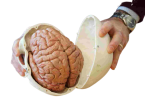Itchy skin, known as pruritus, is a bothersome and uncontrollable sensation that often leads to scratching for relief. This condition affects a significant portion of the population, up to 25 percent, at some point in their lives.
Despite its impact, itchy skin is often underestimated and disregarded. However, a team of scientists in Germany has taken a significant step by establishing the country’s first research unit dedicated to studying chronic itching. This translational project, called PRUSEARCH, aims to shed light on the underlying causes and develop targeted treatments.
Chronic itching can arise not only from dermatological conditions like psoriasis or eczema but also from liver and gallbladder disorders, kidney failure, diabetes, cancer and its treatments, as well as psychiatric and neurological conditions. The elderly population is particularly susceptible to chronic itching. Unfortunately, effective treatments specifically designed for this condition are still lacking.
Dr. Andreas Kremer from the Department of Medicine 1 – Gastroenterology, Pneumology, and Endocrinology at Universitätsklinikum Erlangen explained, “The research unit’s primary objective is to identify the factors responsible for chronic itching in patients, characterize the structural and functional changes in nociceptors (sensory nerve endings) associated with chronic pruritus, and define potential mechanisms of neuronal sensitization.”
The researchers are currently investigating cholestatic pruritus, a type of itching caused by liver and gallbladder diseases. Whether it stems from an inflamed biliary tract, hepatitis C, liver cirrhosis, or a liver tumor, chronic itching can manifest alongside any condition that affects the liver or the biliary tract.
Kremer elaborated, “Chronic pruritus often occurs as a symptom of cholestatic conditions when the secretion of bile acids is disrupted. Cholestatic pruritus is particularly distressing, providing no relief from scratching. Patients report that it is most severe at night and in the early hours of the morning. It primarily affects the extremities but can also occur all over the body.”
One trigger for itching that the scientists have identified is lysophosphatidic acid (LPA). This small lipid is an intermediate product of intercellular fat digestion and has known effects on muscle cells, platelets, blood pressure, inflammation processes, and even the development and spread of tumors.
The team is currently investigating the molecular mechanisms by which LPA operates and activates neuronal and non-neuronal cells through translational studies, which involve progressing from in vitro research to human studies.
To observe the impact of LPA, scientists are employing psychophysics. This involves injecting LPA into the skin of test subjects and asking them to evaluate their sensations, such as itching and pain. Additionally, microneurography is being used to determine which specific subsets of somatosensory nerve fibers are activated by LPA.
PD Dr. Barbara Namer, another member of the research team, explained, “To do this, we use a very thin metal microelectrode to puncture the peroneal nerve and insert a second electrode into the skin. These electrodes allow us to tap into individual nerve fibers like telephone wires, enabling us to listen in on their impulses and stimulate them using electricity.”
Dr. Kremer further added, “To assess the characteristics of these nerve fibers, various stimuli are applied to the back of the foot in addition to LPA, such as pressure, heat, cold, or histamine. We hope that by enhancing our understanding of LPA, we can also identify additional mediators of itching in the future. This will provide the basis for developing new medications that target the root causes of itching.”







Leave a Comment